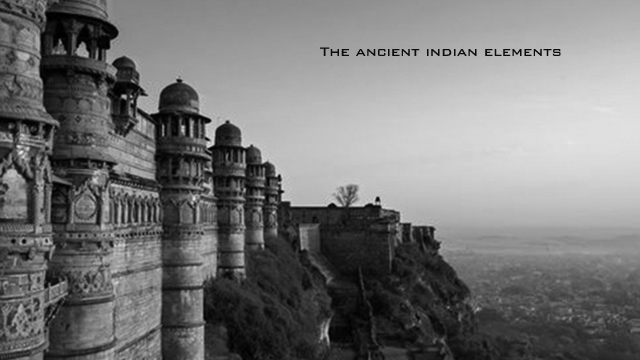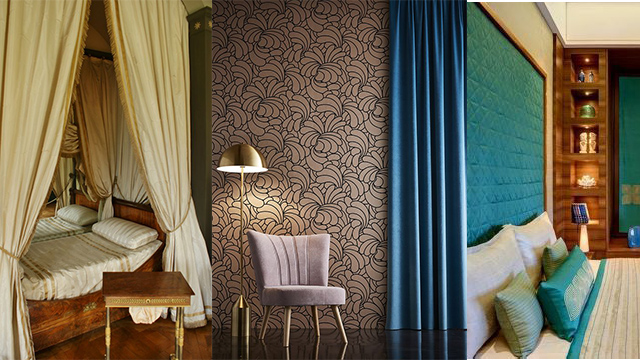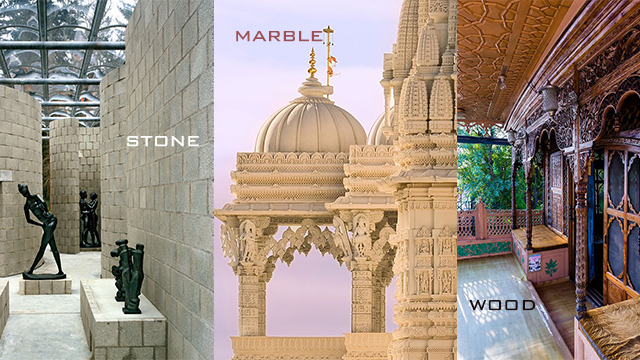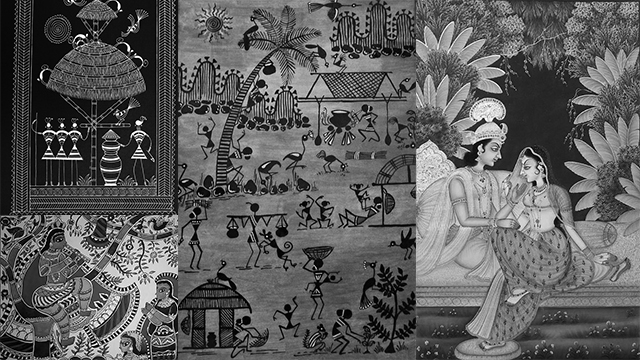India is one of the pioneer countries for its recognizable contribution to architecture and interior design. The distinct features of Indian interior design are purely divine. References found in ancient Hindu scriptures narrates Lord Vishwakarma, the great Architect, inherent with abstract creative power and extreme talent, created Heaven; Lanka- the city of gold; Dwarka-Lord Krishna’s province; Indraprastha-the palace of Pandavas. Therefore the notion somehow justifies the ethnic, historical, and linguistic style of Indian Architecture and interior designing.

The countries diverse and vibrant history speaks its style while enchanting primeval influence. But, most importantly, the various elements and features that transitioned over time indeed carried India’s rich heritage and tradition. The following article will illustrate few such inevitable aspects that are still escalating any composition to manifest an Indian style into space.
Colors, motifs and patterns :

Colors have subtly transitioned from an ancient classical to the chic modern era. A saturated, vibrant, and rich palette of colors are the striking vital features that add the drama, luxury, and comfort of Indian-style Interiors. The earthy color hues, burnt orange, royal blue, deep pink, and lush green, convey the classic Indian touch even in the modern and minimal palette.
Similarly, the compositions of motifs and patterns can not overlook when adding grace to Indian design. Therefore, Motifs and patterns are the most common ingredients that discern to be a part of the Indian design style. Floral, peacock, goose, lotus, and mango are the most common motifs use to decorate textiles. While metal, wood, and stones are often chisel in the traditional holistic patterns.
Sculptures :

Sculptures are fine art and an inseparable piece of any Indian interior design. The science of Sculptures and Architecture indicates its immeasurable importance since the dawn of Architecture and so into interiors. Sculptures were already the predominant form of artistic expression since the birth of Architecture in India. Numerous Gods’ attributes, humans, animals, and eternal symbols represent creation, power, destruction, peace, and divinity in Indian design.
Pottery :

Pottery is one of the tangible and iconic elements of Indian Art. The term pottery and ceramic is interchangeably same that describes the object has formed with clay. However, the tradition of handmade pottery is prevailing in India since the Indus valley civilization. Until recent times all Indian pottery has been earthenware and mainly utilized for various domestic, religious, and social happenings. But, with modernization and advanced technics, the traditional form of stonewares, porcelain potteries, and ceramic accessories were adopted into the Indian Interior as decorative elements.
Textile :

Textiles are the tensile canvas representing colors, patterns, textures, and outlines the regional art forms from their respective terrain. Additionally, they are an eye-catching element that whips up the final glance in a space. Luxurious silk, luster linen, imprinted motifs, and velvety sensual textures are well-known fabric types that portray the royal Indian touch. Yet, hand-woven cotton and silk is the most famous & widely use fabric all over India. Every part of the country weaves a distinctively different pattern that narrates their creative story and unique art form, such as Kalamkari, Chikankari, Sambalpuri, and Chanderi Phulkari, Bandhani, etc.
Sustainable palette :

Rugged, rustic, yet eco-friendly materials lend a timeless and elegant vibe to Indian interior design. Therefore, the sustainable palette of materials, i.e., Solid wood, Stone, Granite, and Marble, has been entwined in ancient Indian architecture. These versatile and eco-friendly materials come with a unique, distinctive characteristic that brings natural textures into compositions. They can use as flooring and wall cladding material or even wield to form furniture and cabinetries.
Accentuated pieces from traditional meet :

Bronze, brass, silver, and gold-like metals still project an Indian appeal in any modern interior space. These shiny and attractive metal pieces initiate just the right hint of glamour and elegance while preserving an ethnic touch. With polished Metals, a composition can depict spirituality and prosperity. However, the antique or rustic finishes are habitually part of Indian indoor when used for planters, mirror frames, candle stands. Sensuous figurines, such as Buddha, Ganesha, Peacock, Elephant, and Turtle, are truly traditional approaches.
Folk art or tribal paintings :

The folk art and tribal paintings from India’s various territories are ethnic, simple yet colorful, and vibrant enough to speak countries rich heritage. On the other hand, these classical paintings create a sense of purity and divinity. Indian art paintings are the true reflection of deep-rooted history by carrying vivid mythological descriptions. Warli from Maharashtra, Madhubani from Bihar, Tanjavur from Tamilnadu, Saura from Madhya Pradesh & Pattachitra from Odisha are the few most famous art forms that typically bag style statement in any traditionally inspired Indian homes. Indeed, the conventional painting method has transformed through time, and today’s designers represent art in numerous ways.

Very good article! We are linking to this particularly great content on our website. Keep up the good writing. Dulcea Crosby Elwaine
Thanks in support of sharing such a fastidious thinking, paragraph is good, thats why i have read it completely Nellie Adolphe Blackburn
Highly descriptive blog, I loved that bit. Will there be a part 2? Avrit Ferguson Elfreda
Awesome blog.Really thank you! Much obliged.
This is one awesome blog article. Really looking forward to read more. Great. Anderson Genberg
Simply wanna admit that this is very helpful , Thanks for taking your time to write this. Deangelo Valladores